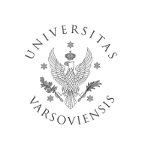Centre for Quantum Optical Technologies
Launch Event | 21 June 2018
Venue: Centre of New Technologies, Banacha 2c, 02-097 Warszawa,
Lecture Hall 0142 (Ground floor)
Programme:
| 9:30 |
OpeningProf. Agnieszka Chacińska |
| 9:35 |
WelcomeProf. Marcin Pałys |
| 9:45 |
International Research Agenda ProgrammeProf. Maciej Żylicz |
| 9:55 |
Centre for Quantum Optical TechnologiesProf. Konrad Banaszek |
| 10:05 |
UK National Quantum Technology ProgrammeProf. Sir Peter L. Knight FRS |
| 10:25 |
Discussion panel |
| Prof. Zbigniew Błocki Director, National Science Centre Poland |
|
| Prof. Sir Peter L. Knight FRS Imperial College London |
|
| Prof. Marek Kuś Center for Theoretical Physics, Polish Academy of Sciences |
|
| Prof. Maciej Żylicz President, Foundation for Polish Science |
|
| 11:15 |
Coffee break |
Scientific Session:
| 11:45 |
Privacy for the paranoid ones – the ultimate limits of secrecy
|
| 12:30 |
Integrated photonics devices for quantum communications
|
| 13:15 |
Are there non-trivial quantum effects in Biology? A discussion on light harvesting processesProf. Susana Huelga Universität Ulm Quantum biology is an emerging field of research that concerns itself with the experimental and theoretical exploration of non-trivial quantum phenomena in biological systems (See references below for recent reviews on the subject). We will present an overview aimed to bring out fundamental assumptions and questions in the field, using light harvesting as a prototypical biological process. We will identify basic design principles and develop a key underlying theme — the dynamics of quantum dynamical networks in the presence of an environment and the fruitful interplay that the two may enter. A fundamental element in the discussion is the formulation of a microscopic model able to explain the observed persisting oscillatory features in the spectral response of different pigment-protein complexes at ambient temperatures. Along delocalized electronic excitations, we argue that quantum coherent interactions with near-resonant vibrations are instrumental for explaining long lived coherence and may contribute to light-harvesting performance. Experimental results on both natural and artificial systems will be shown to be in agreement with this vibronic model which therefore provides an archetypical framework for the field.
|



